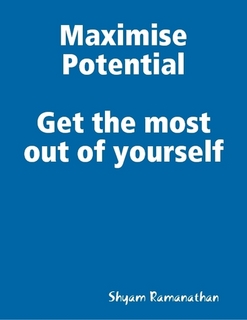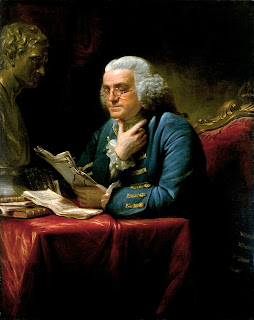6 Lessons from The End of Average
We have all looked at averages
everywhere from sports like cricket or baseball to grades in school. The
questions to consider are
1. Are we looking at the
averages in the right way?
2. Is the way we view
the world the only way out?
3. What if the averages
are not really true?
For example what if you became an
outstanding engineer but only thing is you need six years and not four. Imagine
if someone could become the best engineer that ever lived but needed six years
would we want to stop them because of a standardized formula. So often we get
trapped into thinking that only fast learning is good learning or only if we
complete a degree faster we are more intelligent.
Well the good news is some of these
questions have been answered very well in the book “The End of Average” by Todd
Rose. It really addresses the question of averages with great research
and insights. Here are the 6 lessons I gleaned.
Jaggedness principle – Don’t engage
in one dimensional thinking. For example we believe to be better in basketball
we need to score better. However we need to think across all dimensions
of performance. Basketball talent includes scoring, rebounds, assists, steals
and blocks. These are five tools and very few have all five so we need to have
teams that are complimentary. The example provided is that of Isiah Thomas who
in 2003 took over as President of basketball operations for the Knicks. He
evaluated players based on a one dimensional philosophy of basketball talent
based solely on number of points scored per game. The Knicks managed to get a
team with the highest combined scoring average in the NBA and then suffered
through four straight losing seasons. Basketball teams which are successful are
composed of players with complementary talents where Thomas’s Knicks teams were
terrible at defense.
For example the one dimensional approach to
talent is to think of only IQ as the factor but as all of us know there are so
many other factors. General intelligence –One dimension value of intelligence
is wrong and Google changed its hiring practices by adopting many evaluation
characteristics including additional information on hobbies including chess. It
considered more than 300 factors including things like the age when someone
first learnt computers is also captured. Smaller companies are getting rid of
the one dimensional blinders. The author gives an example where he was
wrestling with solving an analytical problem in the head but his dad said your
strength is visual thinking. He took that advice by changing the problem into a
visual table and got his highest score. The key is to blow away all assumptions
and myths by focusing on what works for your situation.
Context principle – This
principle talks about our obsession with traits. Things like labeling people as
introverts vs extroverts. There is a great analysis on why the Myers&
Briggs Indicator may not have everything known about your personality. It
is the context which determines whether you are an introvert or extrovert. For
example I may be an extrovert in a social gathering whereas at work I may be a
quiet introvert. There are also examples where a child may steal something from
home but never do that in school. Todd rose was considered an aggressive child
at school but his grandmother always said he listens so well. The context is
the key. A new way of thinking is introduced here which is called the If then
signature for example If jack is in the office then he is extroverted. One of
the boys is aggressive with peers but not with adults. Honesty and charity are
particular habits and not ingrained. The famous Marshmallow test is
mentioned here which was basically seeing if kids can resist waiting 15 minutes
if they wanted another one. Of course the ones who waited after years had
achieved more. This sent everyone into a self-control craze. However another counter
study was done where a teacher lied and then told the students to wait and bar
one no one waited. In another group the teacher did what he said and a more
number of kids waited in this case. This is the power of context. Kids can
enhance control through if then strategies. Basically in an unreliable
situation the kids eat but in a more reliable situation they persist. On
another note human resources for a long time was based on Taylorism but now
organizations can match if then signatures with performance profiles. The basic
premise is to understand each individual and match jobs to their
strengths.
The Pathways Principle – This is about
taking the road less traveled. Fredrick Taylor laid down the standard career
track and there was one right way which helped determine the work day. This had
factory workers who had standard work times, fixed class duration for every
normal student and this resulted in the normal pathway of life. An example
provided is the colon cancer standard and how it was formed. According to
researches the standard pathway only accounted 7% for colon cancers. Mental
health followed a standard pathway and in 2013 for individual recovery only 30%
applied to standard pathway. In all aspects of life you can use any pathway and
your individual way. There are always multiple ways to get to something. The
best part of this chapter was that each individual learns at their own pace and
standardized tests don’t do justice. For example I can read a business book
very fast but if you give a book on mathematics I may struggle to complete
it. We always think that faster learning means smarter. Speed and
learning ability is not related. Evaluate students based on outcomes not speed.
Benjamin bloom from the University of Chicago said there were artificial
constraints imposed on the education process. He designed the courses in such a
way that students learn at their own pace. He divided classes into fixed pace
vs own pace. Students in traditional class only 20% achieved mastery, whereas
90% self-paced students achieved mastery. There is no such a thing as fast
learner or slow learner. Some may be breeze through fractions but struggle in
geometry. Path to excellence is available for everyone. The key is to know each
person's jaggedness, understand the context, and create your own unique
pathway. We are all special cases and we can exert more control over our life
applying these principles. Brave new paths and try unexplored directions.
When businesses commit to individuality- Here the example of
Costco is provided. They pay well above industry average and the key to their
thriving culture is they invest in individual potential. They hire great people
and by giving them power over their career pathway they ensure happiness of
their employees. They also promote heavily within the organization. The author
writes that Costco is a place where a part-time worker can become a
vice-president, and accounting assistant can become one of the most powerful
wine buyers on the planet. Another example provided is Zoho Corporation which
is a software company started by Sridhar Vembu in his hometown city of Chennai.
They hunted for talent that was often overlooked. The founder’s brother
didn’t have any programming skills but still learnt and did great. This made
the founder hire from lesser known schools and go after folks that have been
rejected by others. They created Zoho University which gives economically
disadvantaged raw unproven kids a chance. All the instruction is self-paced and
students learn depending on their strengths. This was started as a corporate
social responsibility (CSR) and makes up the largest contributor of the Zoho
workforce. The university has no exams, deadlines or assignments. Another
example provided is Morning star which had each employee draft their own
mission statement. Individuality is the key to all these organizations and their
success proves this works.
Replacing the average in higher
education –
Getting into college is a game of averages. How flawed is the one dimensional
ranking. We should grant credentials and not diplomas and the four year
degree requirements are arbitrary. We should replace grades with competency and
you get it only if you demonstrate competency. WGU is provided as an example
and it grants degrees through competency exams instead of attendance. WGU was
designed in 1995 by 19 US governors whose main aim was to break the traditional
form of education and come out with something totally innovative and new.
They do this by providing an opportunity for individuals to learn independent
of time or place and to earn competency-based degrees and other credentials
which are in demand for both academic institutions and employers. This is an
impressive mission indeed.
Redefining opportunity – Here an
example is provided of the cockpits which were initially created for averages
but that didn’t work. What research confirmed was there was no such thing as an
average pilot and the myth of the average resulted in a generation of planes
that almost no pilots could reliably fly. The example provided by Todd Rose is
about Daniels [Lt. Gilbert S. Daniels, who majored in physical
anthropology at Harvard before joining the Air Force] who using the size
data he had gathered from 4,063 pilots, calculated the average of the 10 physical
dimensions believed to be most relevant for cockpit design, including height,
chest circumference and sleeve length. These formed the dimensions of the
“average pilot,” which Daniels defined as someone whose measurements were
within the middle 30 per cent of the range of values for each dimension. The
consensus among other air force researchers was that the vast majority of
pilots would be within the average range on most dimensions. Out of 4,063
pilots, not a single airman fit within the average range on all 10 dimensions.
When selecting just three dimensions instead of ten, the “average” thus
calculated fit fewer than 3.5 percent of the population.
Creating adjustable cockpits to handle
everyone irrespective of their height can fit the jagged profile of any pilot. Here
the example of Captain K.Campbell is provided whose call sign was “Killer C.”
Killer C was quite short for a pilot. The author says that in 1952 Campbell
would never have fit the cockpit but in 2003 this undersized pilot was flying
an A-10 Warthog. The lesson to learn here is fit creates opportunity. As a
society we must create institutions based on individuality. There is no such a
thing as an average person only equal fit. Governments should give a chance for
all of us to become all we can be. We must demand it. We should be able to live
life to fullest not based on type or rank. American dream means any individual
can rise to the top.
No one is average. Everyone is unique
and understanding each individual from that point of view can liberate human
potential. This was a wonderfully researched book with a lot of food for
thought.
Finally this view of opportunity
expressed by Abraham Lincoln is great “The government’s leading object is to
elevate the condition of men – to lift artificial weights from all shoulders,
to clear the paths of laudable pursuit of all, to afford all an unfettered
start and fair chance, in the race of life.”









Comments
Post a Comment